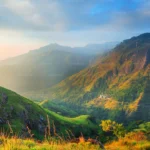
The Modern Spirit of Sri Lanka: A Culture Rooted in Tradition, Evolving with Time
Sri Lanka, an island often celebrated for its ancient heritage and deep-seated traditions, is also

Sri Lanka, an island often celebrated for its ancient heritage and deep-seated traditions, is also

“The waves rise high, a crest of white foam. In this rhythm of nature I’ve

Sri Lanka well known all over the world for its majestic mountain ranges and the

Ever been fascinated by the dwarves of the lonely mountain? With their crafty ways. And

Silent in the glance.. yet empowering… Providing the wielder, that desired touch of magic…. “You

A pink sapphire. All those indents at the surface must be sloughed off. Notice how